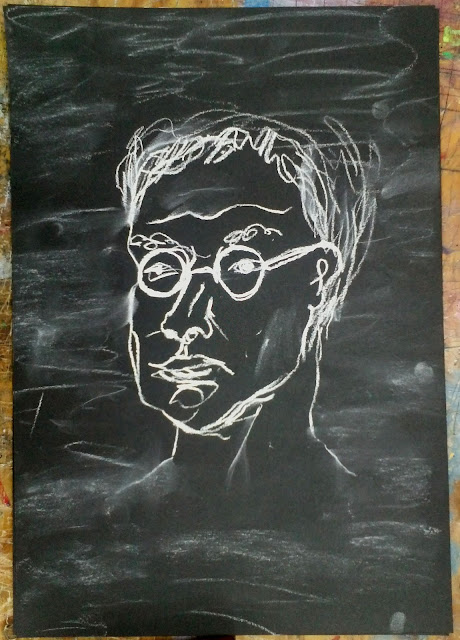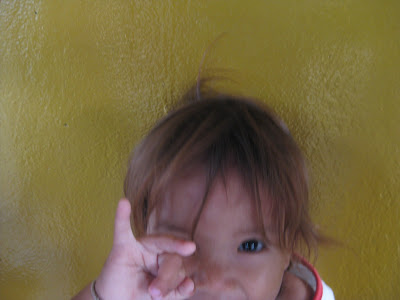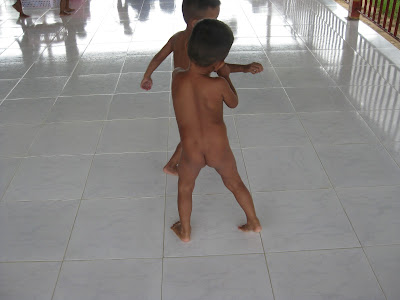2012년 3월 31일 토요일
2012년 3월 28일 수요일
2012년 3월 25일 일요일
기분전환
무의식글쓰기
8시반 기상 30분 다시 자기, 30분 준비 후다닥
빨강 검정 해변도시에서 코끼리 만나기 죽음이라는 것은?
4층에서 뛰어내린다면? 전쟁이 무엇인가 그가 삻아온 삶
내가 했던 멍청한 짓들 나는 왜 나는 왜 나는 왜 나는 왜 나는 왜
사막 그리고 북극의 얼음
그 사람이 기억난다. 그는 스위스의 골프코치이며 온 몸이 근육으로 만들어진듯 했다.
선글라스 때문에 눈만 빼고 나머지 피부는 붉었다. 그는 나의 빨간 원피스가 압도적이라고 했다. 그는 한 30대 초반으로 보인다. 그는 어리다. 나도 아직 어리다.
그는 내가 하는 말을 듣지 않는다.
2012년 3월 24일 토요일
2012년 3월 14일 수요일
2010. 12. 27
여행에서 돌아온 후, 나의 기억.
그 밤이 있기 전의 아침이 엘리가 프놈펜으로 떠난 아침이었다.
나는 바다에가 수영을 하고 아무도 없는 해변에서 싸온 점심을 먹고 방에 들어가 낮잠을 잔 후 사람이 없는 게스트하우스 레스토랑에서 조용히 저녁을 먹었다.
해는 일곱시 부터 저물어 들기 시작했고 난 방 안에서 음악을 듣고, 담배를 피고, 어제 남은 냉장고안의 맥주를 마셨다. 사방이 막힌 호텔방 안이 답답해 호텔 야외의 레스토랑으로 나갔다. 역시나 아무도 없었고 아무도 없었기에 켜진 불빛이 없어 어두웠다. 이층에 있는 바에서 사람들의 술을 마시며 당구를 치는 소리가 들렸다.
그 어두운 곳에서 가만히 앉아 엘리에 대해 생각했다. 그가 떠나는 것이 무서웠다.
“우리가 다시 만날 수 있을까요?” “내가 원하고, 네가 원하면.”
난 한 번도 누군가 내 곁을 떠날 때 슬프다는 감정을 느낀 적이 없다. 아빠, 할머니 그리고 할아버지가 아예 돌아가셨을 때 빼고는. 하지만, 4일밖에 만난 적이 없었던 완전히 낯선 이가 떠나는 것이 난 왜 이렇게 슬플까?
아침에 그에게 작별인사를 하러 그의 집에 들렀을 때 우리는 같이 아침을 먹었다. 그가 슬퍼 보인다고 했다. 울음이 나오려는 걸 꾹 참고 있는 웃긴 내 표정을 상상해봤다.
그가 ‘헤어짐은 달콤한 슬픔’이라고 했다. 이해가 가지 않는다.
그렇게 아무도 없는, 2층의 바에서 새 나오는 어두운 불빛 밑에 앉아서 한참을 울었다. 그가 떠난다는 사실이 슬퍼서, 그리고 내 앞에 남아있는, 내가 살아야할 인생이 두려워서.
그날 밤, 1시쯤에 잠자리에 들었고 인기척에 잠에서 깨 눈을 떠보니 누군가가 희미한 플래시 라이트를 들고 내 방에 들어와 있었다. 요 몇일간 나를 굉장히 언짢게 생각하는 것 같았던 깡마르고 나이든 게스트하우스의 경비원이었다. 정말 이상하게도 그가 위협적이거나 불안하게 느껴지지 않았다. ‘그래 여긴 캄보디아잖아.’
그는 문이 잠겨있지 않아 들어와 봤다고 했다. 사실 나는 그가 반가웠다. 그가 내 침대에 잠시 앉아도 되겠느냐고 물어봤고 나는 침대에서 일어나 앉았다. 잠시 생각한 뒤 내 방에는 의자가 없는 것을 알고 침대에 앉아도 좋다고 했다.
그가 엉성한 영어로 야간경비일이 정말 심심하다고 불평했다. 그가 아름다운 프랑스 청년에 대해 이야기했다. (원래는 그와 같이 저녁을 먹기로 하고 내 게스트하우스 앞에서 7시에 만나기로 했었지만 그가 나오지 않아 그가 약속을 지키지 않은 줄 알았다.)
그는 프랑스청년과 내가 어울려 다니는 걸 알기 때문에 내게 말해준 것 같다. 프랑스청년이 내 게스트하우스 앞에서 5시에 나를 기다렸다고 했다. 30분정도 멀뚱히 기다리다 바로 앞 카페에서 커피를 마시고 돌아갔다고까지 친절하게 말해주었다. 서운했던 마음이 사그라들었다. 동시에 그가 조금 멍청하다는 생각을 했다.
우리는 불을 켜지 않고 플래시라이트만 켠 채로 한동안 이야기를 했다. 그가 라이트로 잠시 내 재떨이를 가리키더니 담배를 피운다고했다. 그가 쥐고있던 라이트는 차가운 푸른빛이었지만 그 빛이 따듯하게 느껴졌다. 그 호텔방의 풍경은 이 세상에 존재할 수 없는 장면 같았다.
그는 경비원 일이 졸립다고 했다. 이 침대에서 잠시 자고가도 되냐고 웃으며 묻길래 그의 등을 치며 당연히 안 된다고 했다. 하지만 그에게 더 있다 가라고 말 하고 싶었으나 혹시 그가 다른 뜻으로 오해할까봐 그냥 가게 내버려두었다. 게다가 다음 날 아침 나도 프놈펜으로 떠나는 버스를 타야했기에 그 순간은 그렇게 끝이 났다.
다시 정리하자면, 그것은 내 영혼이 치유되는 순간이었다. 구지 꼭 그가 아니었어도 나는 어떤 것으로부터 위로받았다.
그 밤이 있기 전의 아침이 엘리가 떠난 아침이었다.
2012년 3월 10일 토요일
2012년 3월 8일 목요일
2012년 3월 6일 화요일
2012년 3월 5일 월요일
Marcel Broodthaer, Voyage on the North Sea,1974
Between 1957 and his death in 1976, Marcel Broodthaers made approximately fifty films. The exact number is difficult to determine: Several no longer exist; some are multipart "programs" assembled from groups of short films (many appropriated from industrial or otherwise "authorless" sources); and others are subtle variations on previous works. A recent exhibition at pioneering curator and collector Thomas Solomon's new gallery, Solo Projects, paired a 16-mm silent film, Un Voyage en Mer du Nord (A Voyage on the North Sea), 1973-74, with a thirty-eight-page, French-bound book that shares its title and ostensible subject matter: the pairing of a late-nineteenth-century amateur painting of an archetypal European ship and a twentieth-century photograph of a pleasure boat against a modern urban backdrop. The roughly four-minute film is projected on a retractable home-movie screen--a Broodthaers motif--and the book displayed on a simple wooden shelf, lit by a single spotlight.
Un Voyage's almost obsolete format and pedagogical presentation gave the show the feeling of a historical document. In each work, Broodthaers "cuts" into the painting and the photograph by focusing on small details. The artist is said to have dated the painting to around 1900, and initially it seems that Un Voyage is delivering a rigorous structural analysis based on formal and historical oppositions marking the divide between the nineteenth century and the twentieth: novel versus cinema; painting versus photography; shipping as commerce versus sailing as leisure. But the work does more than this. By using splicing, binding, and repetition to join these apparent opposites, it performs a complex overlapping of materiality and history. Punctuated by intertitles that demarcate fifteen "pages," the film insinuates a relationship to contemporaneous structuralist cinema--think of the wall-mounted seascape photograph that is central to (and literally at the center of) Michael Snow's forty-five-minute zoom in Wavelength, 1967. But again the comparison unravels as the film in Un Voyage undermines its own apparent logic, repeating "page" five twice, for example, or inserting a brief closeup of cotton weave where one would expect a shot of the painted canvas.
The film and book represent Broodthaers's interest in reproducible media, though the relatively small edition--just one hundred examples of the pair were produced--also suggests that the artist was not aiming for a mass audience. The evidence indicates that Broodthaers was interested in complicating the status of these objects by subverting any notion of an "original" or definitive version. It should be noted that Un Voyage follows directly from several 1973 works not included in the exhibition, among them two 16-mm films--Analyse d'une peinture and Une peinture d'amateur decouverte dans une boutiquede curiosities--and a slide projection, Bateau Tableau. Un Voyage itself in many ways resembles a slide show: Testing the limits of the cinematic, Broodthaers injects a dose of humor by assembling a deliberately inert motion picture from still images.
While Broodthaers's practice is often defined within the limited framework of institutional critique, the breadth and sheer unruliness of his project suggests that one might just as easily place him alongside an artist such as Bruce Conner, with whom he shared both a penchant for found footage and a somewhat after-the-fact Surrealist sense of humor. A 1971 film program by Broodthaers, in which he appropriated the 20th Century Fox logo, also aligns him with Ed Ruscha, who used the same image in 1962, and presages Jack Goldstein's use of the MGM Lion. Solomon's presentation of Un Voyage at this particular moment raises subtle questions about the mediation and proliferation of images, allowing Broodthaers's interrogation of pictures from the past to implicate our digital present.
You know where.
Noise-Free Helmet!, 2011
This Noise-Free Helmet perfectly prevents my lousy laughing noise when I get panic attacks.
It's made of egg trays and some plastic cartons from cookie package.
2012년 3월 3일 토요일
2012년 3월 2일 금요일
피드 구독하기:
덧글 (Atom)




.jpg)






















































